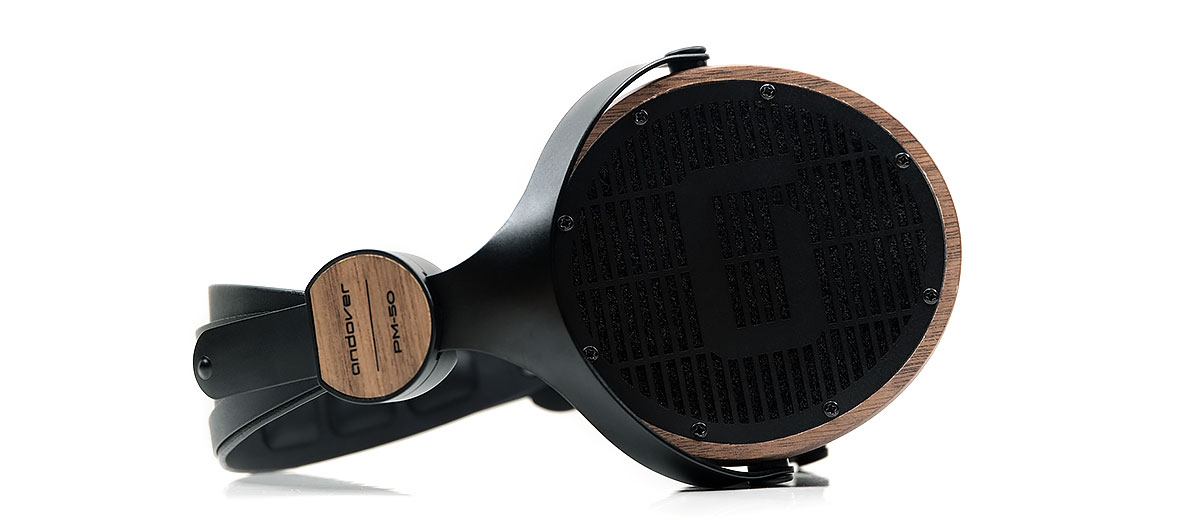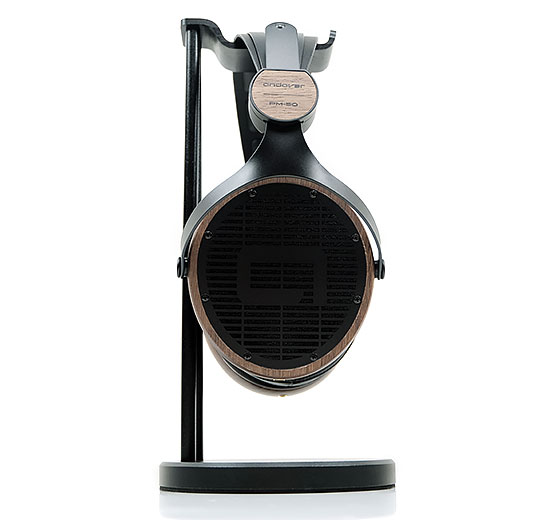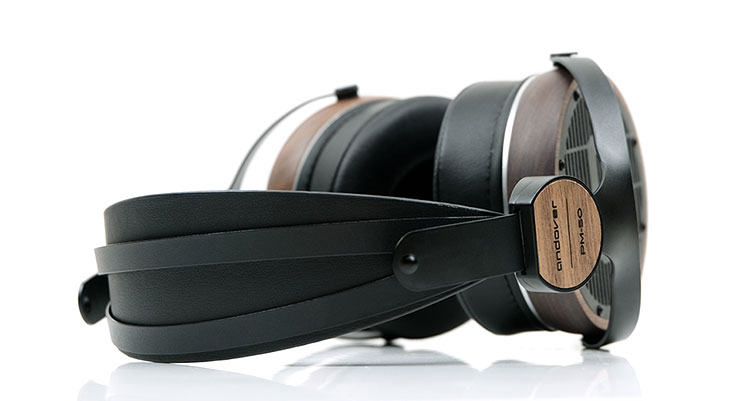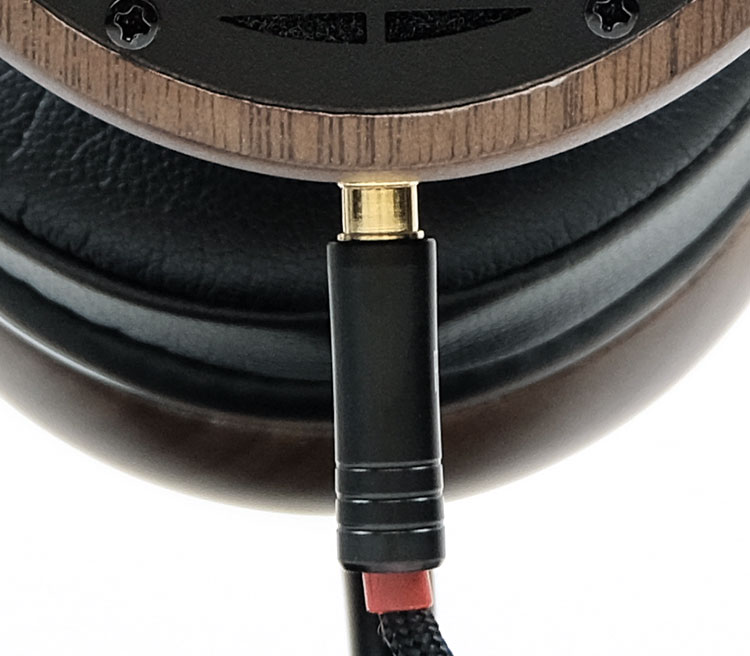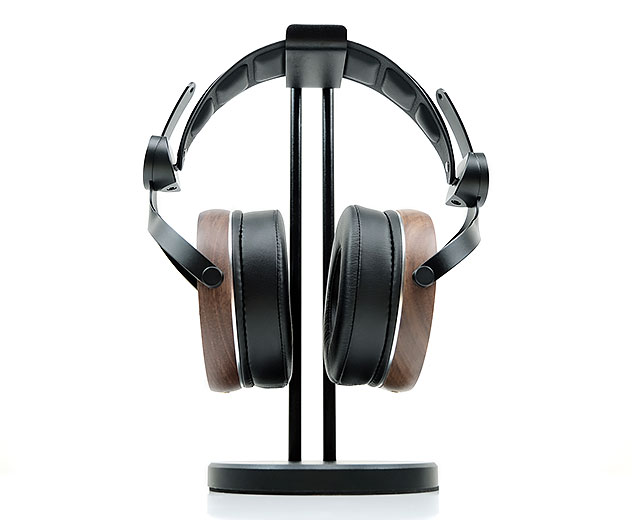The Andover Audio PM-50 is an open-back compact circumaural planar magnetic headphone with a stylish walnut cup enclosure. It is priced at $499.
Disclaimer: The Andover Audio PM-50 sent to us is a sample in exchange for our honest opinion in this review. We thank the team at Andover Audio for giving us this opportunity.
To read about other planar headphone products we have reviewed on Headfonics click here.
Note, this review follows our new scoring guidelines for 2020 which you can read up on here.
So, we have had the Andover PM-50 now for a while since we posted our initial impressions so it is good timing for the main review for those about to ramp up for the holiday shopping season.
Since we did the First Contact, Andover has made a few tweaks to the PM-50 with a new set of pads to replace the previous thinner ones which is a solid move as I was not that keen on the second set of pads for comfort reasons. The new pads do make a qualitative difference to comfort as well as the sound signature compared to what came before.
For those that are coming fresh to Andover Audio, this is a US-based company that has been around since 2012 and has a few interesting products such as their turntable systems and their Songbird hi-res streamer.
The PM-50 is their first pure planar magnetic headphone product launch at a price point of $499 SRP. This seems to be the sweet spot for pricing now for a lot of new entry planar headphones this last year to two and is aimed squarely at those interested in alternatives such as the Hifiman Sundara, Verum Audio, or even the Audeze LCD-1.
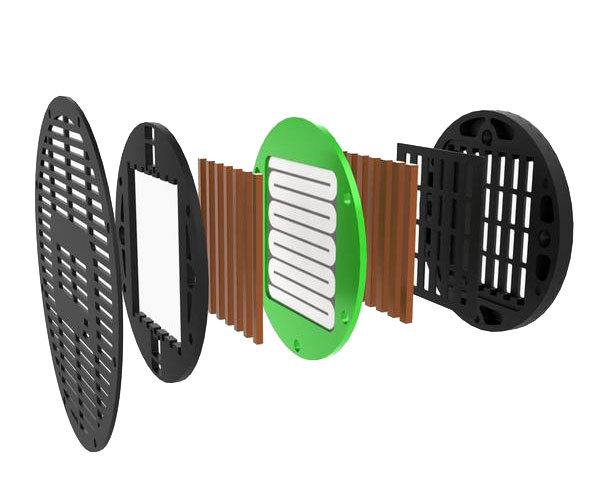
Tech Inside
Before I got the PM-50 in my hands I had no sense of scale from the pictures and presumed this was a circumaural headphone. In the spec sheet, it is indeed listed as over the ear.
In reality, this is a large supraaural open-back planar headphone and closer to the PM series from Oppo. It is also just slightly larger than the Audeze LCD-1 cup size with pads that do press on your ear for a seal rather than your neck.
Driver
Inside those cups, the PM-50 is using a 50mm square planar magnetic design. That’s a shape and size I have not seen mentioned since Blue Ella in 2017 and they launched for a much higher price of $699.
50mm might seem small compared to the listed 106mm size of the Audeze LCD-2 Classic, for example. However, that does not mean a vastly reduced performance.
Final’s D8000, for instance, also uses a rounded AFDS 50mm planar driver, and it is one heck of a performer. Mind you, the PM-50 smaller pad openings and cup size will mean a very different presentation to the D8000.
I have no further information at present on the driver build so I cannot say for sure if this is a single magnetic or a small double-layer magnetic diaphragm. I have no weight specification listed but our scales had it closer to the Oppo PM-1 weight of 390g. Much of that may be in the heavy-set enclosure rather than the magnets, however.
Numbers
The rating of 102dB SPL and 32Ω is very encouraging for those worried about needing a hefty amp to get the best out of the PM-50. I have yet to really try it for scaling capability, that will come in the main review.
Already though, the PM-50 is more efficient on paper than the likes of the Hifiman Sundara at 37Ω and 94dB SPL or the Brainwavz Alara at 20Ω and 94dB SPL. Audeze’s LCD-1 is probably the closest in terms of power requirements, price, and size at 99dB SPL and 16Ω.
Design
This is a beautiful looking compact planar magnetic headphone. As mentioned, it is a little to the heavy side around 390g possibly more judging by our crude scale comparisons with the Oppo PM-1.
However, it does seem very robust with a very attractive mix of a rich grain walnut and silver trim cup enclosures with a matte black dual-steel headband. The full-size wide arch gimbals and pivot blocks are also finished in a matching matt black steel and do not feel like they will break or crack under pressure.
Those pivot blocks are also finished with a matching branded walnut veneer on both the left and ride sides that nicely complement the main cups look and feel.
Underneath the main steel headband arch, Andover has used a pleather pressure strap system with some memory foam indentations underneath for comfort and support. Actual sizing adjustments are done via the blocks which slide up and down the gimbal. the movement does seem quite smooth with a nice level of resistance so it is unlikely to slip and slide during use.
Comfort
Now there is a bit of history behind the PM-50 fitting. From what I have read, the original version had a very high level of lateral clamping. So much so, that a guide was released by Andover to mitigate that pressure via some bending tweaks. If you have V1 and are wondering what that might be you can find the link to the PDF guide here.
The PM-50 I have is the newer version which should have a more relaxed fitting compared to the original. I do not have both here to compare so I can’t contextualize the difference. What I can say that the pressure system of the PM-50 is more lateral than vertical but fits very well on my head with the smallest headband adjustment.
Because I find the PM-50 more of a large supraaural or small circumaural a lot of the stock pad surface does hit the ear rather than the surrounding next and head which can amplify the effect of lateral pressure.
Pad Choices
There are two sets of pads inside the box and both are made of pleather with memory foam inserts. The current pad choices have changed however since we first introduce the PM-50 to our readers.
Originally, the first set of pads were relatively tall with a narrower inner wall compared to the second set which was quite flat. The second set was not that comfy with an uneven pressure application even though they initially felt more relaxed than the thicker alternative.
Now we have a 3rd version which replaces the second. It is back to the deeper and thicker outer design but with a wider inner wall or opening than the first set of pads.
Not only are the new pads comfier than the first two I tried courtesy of that wider opening but the performance opens up a bit better with less bass thickness and a more open midrange. These are the pads you will ideally be using for the majority of the time.
Stock Cable
The PM-50 uses a dual-entry 1.75m (measured) High-Grade OFC (Oxygen Free Copper) Cable wrapped in a nylon round jacket. Both ends are terminated with slim black metal barrel gold-plated 3.5mm TRS jacks so it is an unbalanced termination. You do get a 6.35mm conversion jack should you wish to plug it into a desktop component.
I may have a balanced cable equivalent around somewhere with similar connectors that I can try for the main review just to get a feel for the difference going balance might make.
Both connectors are clearly terminated left and right with a small red strain relief on the right just to make doubly sure. There is no labeling on the headphones so technically they are directionally agnostic. However, there is a slight angle to the female sockets on the base of the cups that naturally guide you to which is left and which is right.
This cable has some nice deadening for easy handling and it is not too heavy either. You will not find much in the way of microphonics or memory retention so it is fairly controllable. I would call this a halfway house between portable and desktop use.
Packaging & Accessories
The PM-50 comes in a fairly smart and professional looking retail package. It is consistent with the likes of the Hifiman mid-fi large stiffened black cardboard boxes with a vinyl wrap and clear graphics showing the headphones and branding.
Inside the PM-50 are deep-set in their own contoured foam holder and protected by a foam ceiling. The accessories are fairly straight forward for a headphone at the price point with a 3.5mm TRS terminated dual-entry cable, additional pads, a quick setup guide, and a quarter jack or 6.35mm converter.
Sound Impressions
Summary
The PM-50 is more of a gentle n-shaped response curve with a distinctly linear but pure sounding planar bass response and a very smooth lower-mids transition. The overall tone is warm, smooth, and euphonic with a bass-to-mids emphasis and a relaxed treble performance.
With the smaller opening pads, the mids have a slightly elevated curve up into the upper mids with a stronger vocal presence but also an intimate staging quality. Switching to the newer large opening pads flattens that mids peak a bit so higher pitching vocals sounds comparatively more neutral but mids are not as intimate as a result.
Vocals on the small opening pads, forward as they are, refuse to get shouty or edgy. There is a gentle but determined roll-off from the high point around 2-3k into the treble that takes a lot of edge of any potential sibilance creeping into the PM-50 mids and percussion timbre. The PM-50 is relatively ‘splash-proof’ in that regard.
However, it does suck a lot of air from the performance and leaving a very rounded mid-centric broad sounding tonal quality that pulls heavily from the low-end. You could argue this is a dark tone with a lack of contrast that softens the definition to produce a very forgiving sound.
Timbre
The PM-50 timbre is warm and reasonably full-bodied but with an even-harmonic bias. That slow but long fade from around 2k reduces the treble influence from instrumental and vocal notes leaving a dominant lower harmonic order where the stock PM-50 planar driver tuning is stronger.
That is not to say that the low-end is dominant though it does have a decent level of sub-bass extension. Rather, the bass on the PM-50 is quite linear and controlled up to the lower-mids where it then starts a rise to that 2-3k peak.
The warmth in the PM-50 timbre really comes from that rise which slides upwards as early as 400-500Hz pushing lower-mids further forward and amplifying instrumental notes in that region.
Combine that with the tapered top-end and the definition is liquid sounding on the instrumental note attack and quite broad or full-bodied in their sustain. Vocals can often sound deliciously smooth and rich in delivery which I know a lot of people prefer.
However, that rounded tone takes precedence because of the lack of upper harmonic order presence. A necessary splash of treble to produce some natural contrast to the lower-mids warmth is somewhat missing and that tends to dampen down the PM-50 vibrance and clarity.
Staging
The PM-50 is more on the intimate side for an open-back planar with decent bass extension and a forward vocal presence using the stock deep pads, (around 1-2k peak).
The faded treble pulls a little bit of headroom and air out of the stock staging performance of the PM-50 which is where some EQ tweaking comes in handy to tease out more sparkle and contrast.
You get a nice sense of depth but also a low-end that is not aggressively forward. Lower-mids are also to the fore with that rising FR from 4-500Hz to 2k which is where the PM-50 tends to offer the most focus when listening. This is also the area that will present the best detail within any instrumental and vocal texture.
The level of instrumental separation is actually quite good up to 2-3k but beyond that, it is more about the level of presence you feel you need. That dB fade into the treble might rob some important imaging cues of the necessary impact to balance out the overall soundstage.
Technically, the PM-50 drivers can perform though, or else that Mango PMEQ 2-8k tweak outlined above would not have produced any desirable results. I would suggest going there to enhance the treble imaging cue clarity.
EQ
PMEQ
If you are an iBasso Mango app user or a believer in EQ then the PM-50 does respond very well to their PMEQ software so if you have a preference for more energy beyond 2k this will work.
Within Mango PMEQ I opted for a peaking filter that is centered around 5k but with a 0.3 Q-factor to get a very broad and gradual rise starting at almost 1k. Nothing too narrow that would introduce any uneven or shape peaks in the PM-50 response curve.
You can get away with almost 5-6dB gain in that PMEQ tweak before it starts sounding too bright or upsets the overall tonal balance. What you are aiming here is to just tease out a bit more contrast and treble presence rather than take the PM-50’s smooth sounding timbre away which is its main strength.
This setting introduces a big change in the PM-50’s balance and tonal coloration. You get a welcome level of treble contrast that enhances the perceived clarity and vibrance throughout the mids.
Importantly, it also introduces better headroom beyond that 2k marker which, in turn, teases out more percussion energy and timbral ‘bite’.
MSEB
If you are a HiBy fan then MSEB can also produce a similar change though the harmonic balance is a little trickier to get right without the top-end sounding too thin. What I suggest you can do here is introduce some more bass and treble contrast for an ‘exciting-sounding’ PM-50 sound signature.
If you are using the HiBy R8 start by pushing the overall temperature setting towards cool/bright by around 5-10 steps, add a bit of bass texture (around 20 steps max), then some air towards the crisp side by 10-20 steps depending on your tolerance levels.
I would also tease out the vocal presence by pushing the voice slider further forward. You can further tweak vocals with sibilance and overtone factors but not wholly necessary if you are upping the crispness slider at the same time.
It is not quite as balanced as the Mango PMEQ but does introduce some additional odd-harmonic influence on the mids and increases percussion brightness and presence.
Click on page 2 for synergy and comparisons

